- Spirit 1.0 Plus
- Spirit 1.0 Evo
- Pod Drive Evo
- E-Series Battery
- G102-100 Battery
- Find a Dealer
- Have a Dealer Contact Me
- Product Registration
- Support Center: FAQ & Guide
- Video Tutorial
- Download Center
- Performance Bulletins

Electric Sailboat Motor: Range, Cost, Best Kits for Conversion
Today, owning a completely green sailboat has been made possible with electric sailboat motors.
Imagine cruising with the silence of an electric sailboat motor and the ease of use with a simple press on the start button. What’s better is there are no exhaust fumes at all with significantly less maintenance.
It’s so appealing that a lot of sailing liveaboards have made their electric sailboat motor conversion.
However, some sailors are still on the fence, worrying about the range and price of the electric sailboat motor.
If you are one of them, you are in the right place!
This post will guide you through every aspect you need to know about electric sailboat motors to help you make an informed decision.
Besides, you will get professional insights on how to make the electric sailboat motor conversion for your own boat and learn the best electric sailboat motors (with honest reviews).
Table of contents:
- Electric Sailboat Motors: Confusion Explained
Electric Sailboat Motor or Combustion Motor
- Electric Yacht Motor Conversion: Two Solutions
- How to Size an Electric Sailboat Motor
Best Electric Sailboat Motors (with Reviews)
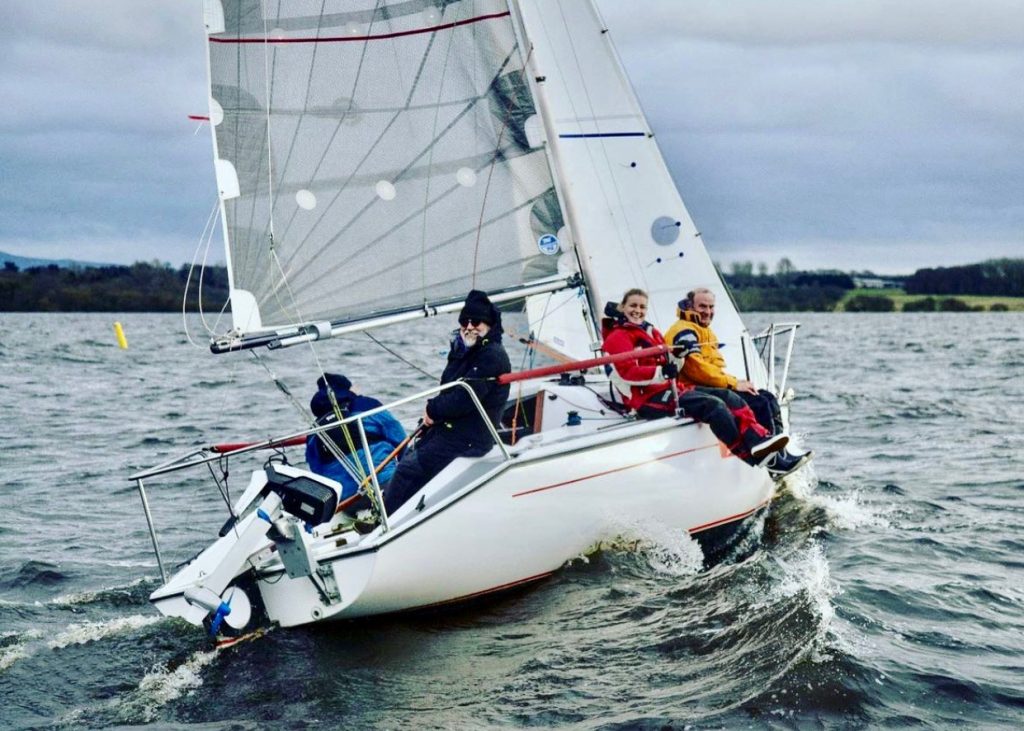
Electric Sailboat Motor: Confusion Explained
Can you go cruising with an electric sailboat motor? Can you put an electric motor on a sailboat? Are there any limitations?
Whether electric sailboat motors are a good fit for your boat is not a YES or NO question. Here we will explain your top worries with statistics and facts. That way, you can make a wise decision according to your situation.
You may hear some complaints about the batteries and range of the electric propulsion.
However, their experience may not suit electric sailboat motors.
In fact, even small electric engines work pretty well in many sailboats. That’s because most of the time, the wind can power the boat, and the motor is just used for docking or in rare times when there is no wind.
Therefore, it makes more sense to learn electric sailboat motor performance in real-world applications.
Here is a test report of a 3 HP electric sailboat motor on an RS21 racing sailboat:
| Power (W) | Speed (mph / kph) | Runtime (hh:mm) | Range (mile / km) |
| 50 | 2.2 / 3.5 | 20:00 | 43.5 / 70 |
| 150 | 3 / 4.8 | 6:50 | 19.3 / 31 |
| 300 | 4 / 6.4 | 3:20 | 12.4 / 20 |
| 500 | 4.2 / 6.8 | 2:00 | 8.5 / 13.6 |
| 700 | 4.8 / 7.7 | 1:30 | 6 / 9.7 |
| 900 | 5 / 8 | 1:05 | 5.6 / 9 |
| 1000 | 5.5 / 8.8 | 1:00 | 5.5 / 8.8 |
As you can see, the small electric sailboat motor can run at 5.5 mph top speed for one hour continuously.
And there is a big difference in terms of range vs speed for electric sailboat motors:
If you lower the speed, the range and runtime can be greatly extended. The slower you go, the further you’ll get. For example, if you cut your speed in half, the electric sailboat motor can last 7 hours and go 20 miles within one charge.
That’s pretty sufficient if you use the electric yacht motor mostly for docking or as an auxiliary engine.
Faster top speed (and more range) is available with higher power electric sailboat motors depending on your specific requirements. Contact a specialist to design your electric sailboat motor solutions.
Also, don’t forget to get the electric sailboat motor with regeneration (See recommendations below).
That’s to say, when there is a lot of wind and you’re moving rapidly via your sails, they regenerate and store electric power on the batteries to keep you moving at other times. Solar recharging is also a plus.
Essentially, the range depends on how many batteries you have, so it’s not a limitation of electric sailboat motors but energy and batteries.
If you are still worried, you can offset this by getting a diesel generator, which is more efficient than a diesel engine. And it is a range extender when you need it, but for 90% of your motoring that you don’t need the range, you can rely on the electric sailboat motor.
Some of you might be concerned about the extra weight of the batteries.
In fact, an electric sailboat motor with lithium batteries weighs less than a diesel engine, particularly if you include the fuel weight.
If you want a lightweight electric sailboat motor solution, make sure you get one with LiFePO4 batteries . Compared with other marine batteries, they are more compact in design with much less weight and higher energy density.
Some more advanced electric motors for small sailboats (such as Spirit 1.0 Evo) feature an integrated lightweight battery. So you don’t need to worry about the complex wiring to hook it up or extra space to store the battery.
This is a huge plus if you want to use the electric sailboat motor on a tender or dinghy.
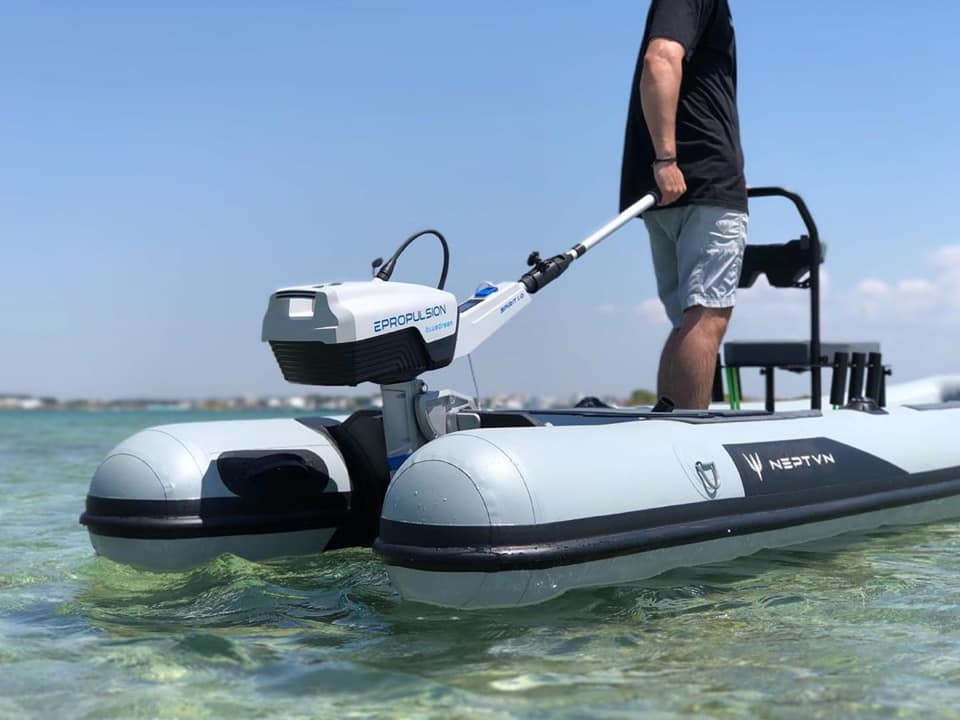
Here is also a chart that collects the weight of some popular electric sailboat motors for your reference:
| Model | HP | Motor Weight | Battery Weight | Note |
| Spirit 1.0 Evo | 3 HP | 11.3 kg / 24.9 lbs | 8.7 kg / 19.2 lbs | 1276 Wh Integrated Battery |
| Navy 3.0 Evo | 6 HP | 24.3 kg / 53.6 lbs | 48 kg / 105.8 lbs | 4096 Wh E80 Battery |
| Navy 6.0 Evo | 9.9 HP | 36 kg / 79.4 lbs | 87 kg / 191.8 lbs | 8960 Wh E175 Battery |
For many people, another big problem with electric sailboat motors is the cost.
It’s true that a gasoline outboard with similar power is a lot cheaper to buy. However, the electric sailboat motor eventually wins in long-term operating cost. That’s especially the case if you are going to do a lot of motoring.
Electric sailboat motors save on fuel and maintenance costs, which can build up to a large amount over time.
Here is a chart that compares the cost of a 3HP electric sailboat motor (coming with a built-in battery) with its combustion counterpart:
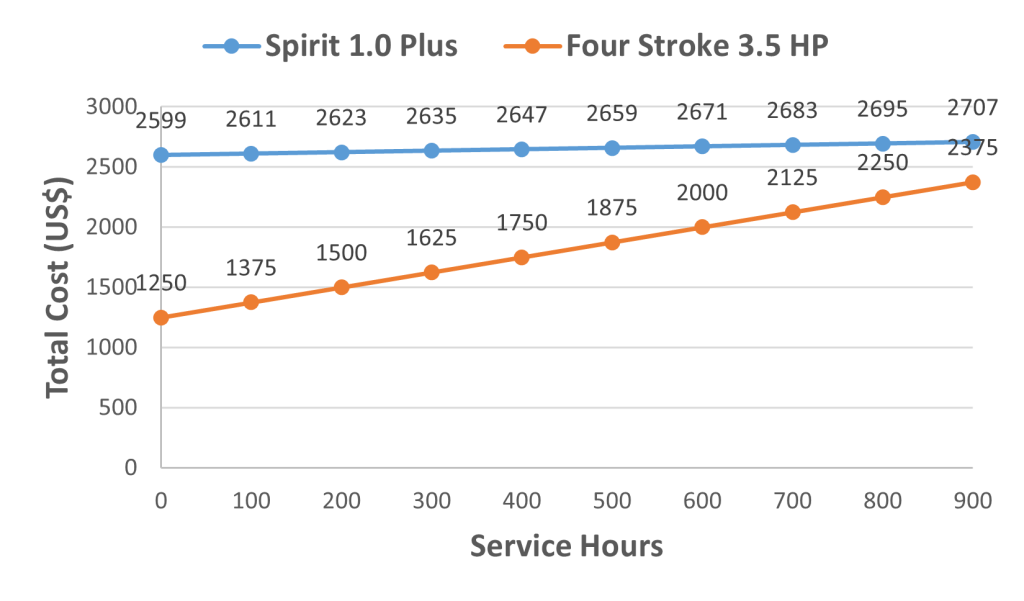
That’s to say, you will cover the price difference for electric yacht motors eventually as long as you use it long enough. Click to check the details of the calculation .
What makes the electric sailboat motor even more worthwhile is it saves you a lot of hassles, especially for sailors who only use the engine in and out of the harbor. Dealing with the maintenance of the gas outboard for a 10 minute motor out of and into the harbor is disproportionate and painful.
*The higher horsepower electric sailboat motor may be different in terms of the cost calculation. Check out the outboard motor pricelist by HP for more information.
As you may have already noticed, electric propulsion has already been widely used in the marine industry:
It’s quiet while motoring, clean to handle, environmentally friendly, with less maintenance and operation costs.
The electric sailboat motors are easier to use with dramatically fewer moving parts to break and no worries about being a diesel mechanic to deal with the hard pulling start. You can have it always on, so it is ready whenever you need it.
And it makes even more sense in sailing applications:
You don’t really need to motor much if your plan is to actually sail. If you are completely becalmed, you will probably just need to motor at 2 knots to keep making way, which is easy for electric sailboat motors.
If you mostly use the motor to get into and out of the harbor, the electric sailboat motor also works great for you.
You can always charge up at the dock, motor out of the marina (or even motor to your sailing area or race start), then hoist the sails and when you’re through, the batteries are charged again.
The electric sailboat motor is also useful as a backup (kicker) motor in case your system goes down. That’s why you can see people pushing a lot of big boats with small electric motors. (Click to learn more information about kicker motors .)
Personally, it’s really nice to have an electric auxiliary in the boat – no smelly, messy diesel and motor oil to deal with, a much simpler system with less maintenance, and much, much quieter operation.
However, powerboats tend to have much higher requirements in terms of both power output and runtime. In that case, an electric sailboat motor can be hard to satisfy your needs.
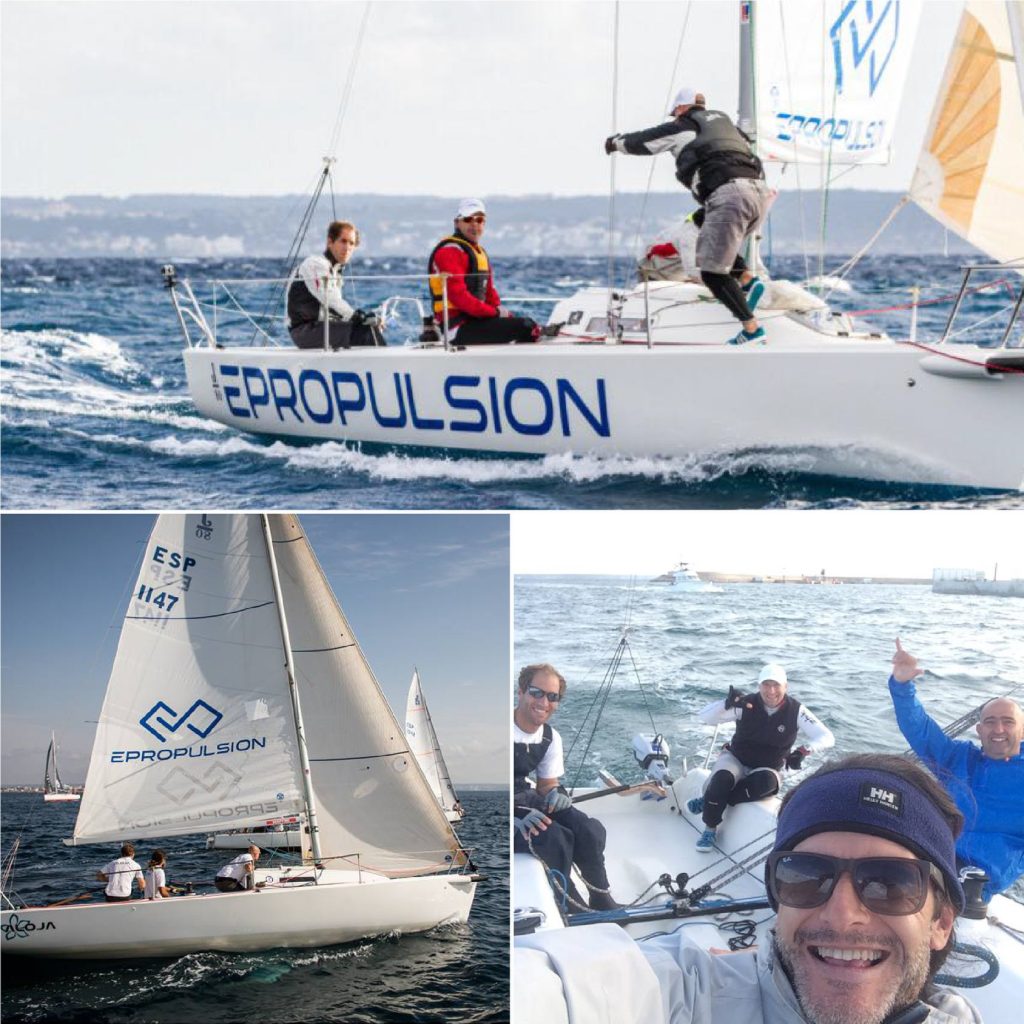
How Do You Size an Electric Motor for a Sailboat?
As a rule of thumb, you will need approximately 1 HP per 550 lb of the displacement of your boat.
Generally speaking, a 3 HP electric sailboat motor can push a sailboat up to 25 ft and a 9.9 HP motor is sufficient for a 30 ft sailboat to motor at a satisfying speed.
However, bear in mind the horsepower you need always depends on your needs and applications.
It’s better to check the data from real-world tests to decide whether the electric sailboat motor is suitable for your specific needs.
For example, the 9.9 HP electric sailboat motor Navy 6.0 allows you to go at 6.9 mph (11.1 kph) on a 30 ft sailboat, and the range can be extended to 46.4 miles if you decrease your speed to 2.9 mph (4.6 kph).
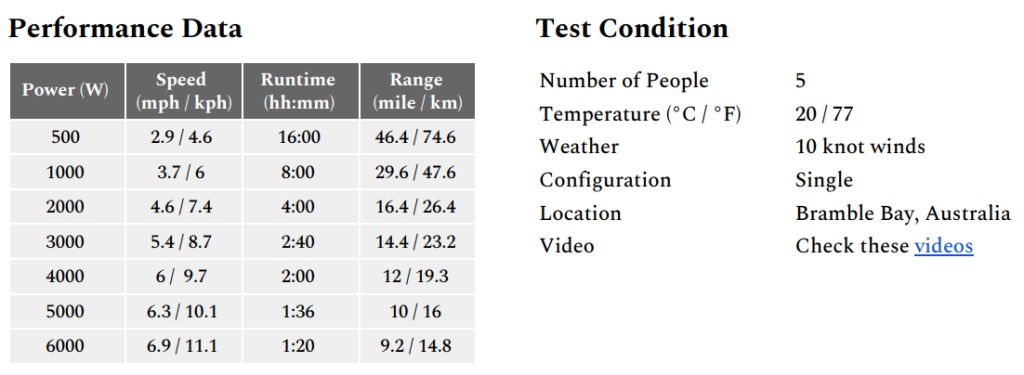
Click to see more test reports with other electric motor and sailboat combinations, and find the electric sailboat motor that suits you best.
If you are still not sure about the size of the electric sailboat motor for you, feel free to leave us a comment and we will get back to you ASAP with professional suggestions.
Electric Sailboat Motor Conversion
Basically, there are two ways for you to convert your sailboat to a clean and quiet electric drive system:
You can either convert your current vessel to electric or buy an engineless yacht and install an electric sailboat motor on your own.
#1. Repower Your Sailboat with Electric Motor
If you decide to replace the diesel engine with an electric motor, you will need to do a lot of preparations:
The DIY approach requires an electric sailboat motor kit (including motor and controller), batteries, a good level of mechanical ability and basic electrical knowledge, as well as some common tools such as a voltmeter.
You will need to take the old engine out for the new electric sailboat motor installation. It’s not an easy task that involves removing the engine mounts and the drive shaft (dealing with the numerous hoses and cables), taking out the engine, exhaust system, fuel tank, and its attendant tubes, etc.
Remember to balance the boat to avoid listing during the electric sailboat motor conversion.
Then in with the new electric sailboat motor. The installation process can be straightforward if you choose the electric sailboat motor kit wisely (See steps below). Furthermore, you can set up solar charging for your electric sailboat motor with solar panels and charger.
Many sailors have recorded their electric sailboat motor conversion process and experience. Be sure to check them out to get some inspiration. For example, Ed Phillips has documented everything which can serve as a guide for newbies to get started.
Mind you there can be a whole heap that can go wrong in designing and maintaining the electric sailboat motor systems. You really need to be totally on top of it if you want decent performance or reliability.
If you are not that technically inclined, it’s better to talk to a specialist first to discuss your plan for a smooth electric sailboat motor conversion.
#2. Install an Electric Motor in a Sailboat
If you own an enginless sailboat, the electric sailboat motor conversion is much easier for you.
All you need to do is to find a reliable electric sailboat motor and install it in simple steps. The whole process can be easily done, even for beginners. Here we take the popular 6 HP electric sailboat motor Navy 3.0 as an example to show you the installation process:
- Step 1 : Rotate the clamps or use the screws to fix the outboard onto the sailboat.
- Step 2: Mount the steering system in the proper position.
- Step 3: Install the tiller on the electric sailboat motor.
- Step 4: Connect the batteries to the electric sailboat motor system.
Click to check the video tutorial that guides you through each step of the installation.
If you are worried about aesthetic issues and want higher horsepower options, an electric inboard motor can be a better suit for your sailboat. If you prefer an inboard motor for your sailboat, contact our OEM team to get an electric propulsion solution tailored to your needs.
Note : You might find some electric trolling motors rated by #s of thrust on the market. Actually, those electric trolling motors for sailboats can only provide limited speed and range. If you are heading into the wind, the trolling motors for sailboats are definitely not an ideal solution.
Once you’ve evaluated if electric sailboat motors are right for you, there are a lot of options for electric systems.
Here are some popular electric sailboat motors with positive reviews from customers worldwide. Fast charger is available for all the models recommended to reduce your charging stress.
#1. 3 HP Spirit 1.0 Evo
If you are looking for an electric motor for a small sailboat, be sure to check out the ePropulsion Spirit 1.0 Evo. It’s suitable for large daysailers or small cruising sailboats under 25 ft.
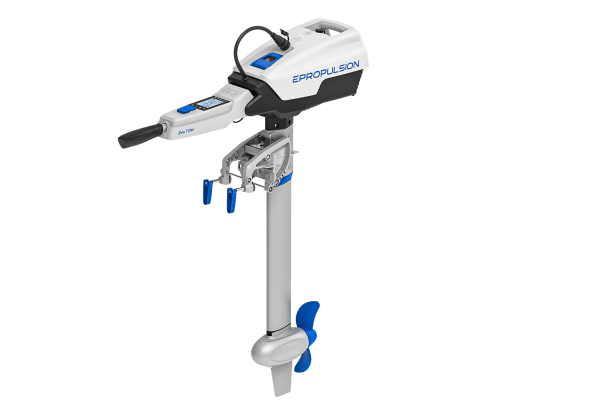
With the Spirit 1.0 Evo electric sailboat motor, you can go 5.5 mph (8.8 kph) at top speed on the 21 ft RS21 sailing boat, or troll for 20 hours continuously at 2.2 mph (3.5 kph) according to our test .
This electric sailboat motor with regeneration allows you to recover energy from the prop while under sail. It will start to generate power automatically when the sailing speed reaches 2 knots.
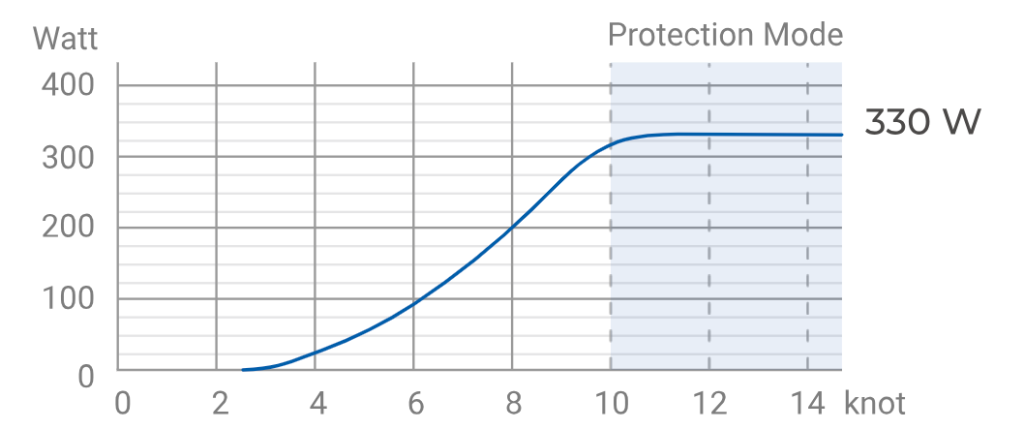
As an electric auxiliary sailboat motor, it can also be easily installed on your tender boats or yacht dinghies since it’s portable and easy to transport (with a lightweight integrated battery).
Features You Will Love:
- Come with the industry-first hydrogeneration capability
- Direct-drive technology makes it maintenance-free
- Portable with a 1276Wh large integrated lithium battery for long range
- Safety wristband keeps you safe in case of MOB
- Digital operation keeps you informed of the battery status
Spirit 1.0 Evo Electric Sailboat Motor Reviews:
“Great weekend with my 17′ sailboat powered by the Spirit Evo. This is great. Quiet and reliable. Went at 3/4 throttle for about 1.5hrs when taking it back to boat ramp.” – Robert Taylor
“Very happy with our Spirit Plus. Pushing our Kolibri 560 a 750 Kg sailboat, with ease. Doing about 5.8 km/h at 500W.” – Frank van Asten
#2. 6HP/9.9 HP Navy Evo Series
If you want a little more juice on the electric sailboat motor, check out the ePropulsion Navy Series. It offers 6 HP and 9.9 HP models for your selection and it provides sufficient power for sailboats up to 30 ft.
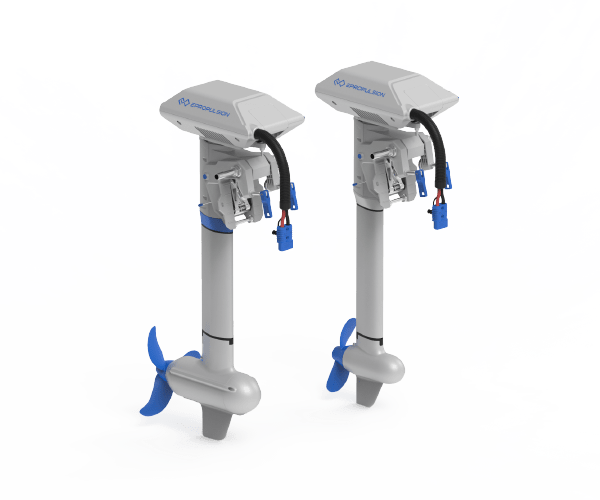
According to our test , the 6 HP electric motor Navy 3.0 can push the Catalina 25 sailboat (25 ft) at 6 mph (9.6 kph) top speed, while the Olga 33 sailboat (33 ft) can go at 7.5 mph (12 kph) with the 9.9 HP Navy 6.0 motor.
The Navy series electric sailboat motor also comes with regeneration features which can be recharged with hydrogeneration, wind turbine, and solar panel.
- Four controls to fit your sailboat installation and your boating style
- Accompany LiFePO4 batteries (need separate purchase) are more energy efficient
- Digital display offers real-time monitoring of the power and battery
- Magnetic kill switch and safety wristband keep you safe on the boat
- Electric start saves you trouble pulling the cord to start
Navy Series Electric Sailboat Motor Reviews:
“I have a Navy 3.0 with E80 on a Catalina 25 sailboat. It is working well. Currently I am using about 4% battery to go in/out of the marina by boat.” – Aaron Young
“Just finished my 8 weeks sailing journey in the Baltic Sea. The two Navy 3 outboards provide enough power for my 33ft catamaran. The 400W solar panels provided enough energy for engines and all other energy consumed on board with 2-6 persons. The two Navy Batteries provide power for engines and all other on-board electric devices. I never had to use shore power, so totally self-sufficient electric system.” – Martin Hildebrand
Recent Posts

What Is an Outboard’s Lower Unit & How It Works

ePropulsion Expands Support for Monaco Energy Boat Challenge 2024

ePropulsion Offers Ultimate MFD Compatibility With New Smart Gateway
Join the discussion cancel reply.
Save my name, email, and website in this browser for the next time I comment.
Notify me via e-mail if anyone answers my comment.
This site uses cookies to personalize your experience and analyze site traffic. By clicking accept or continuing browsing the site, you are agreeing to our use of cookies. See our Privacy Policy here .
View the Serial Number
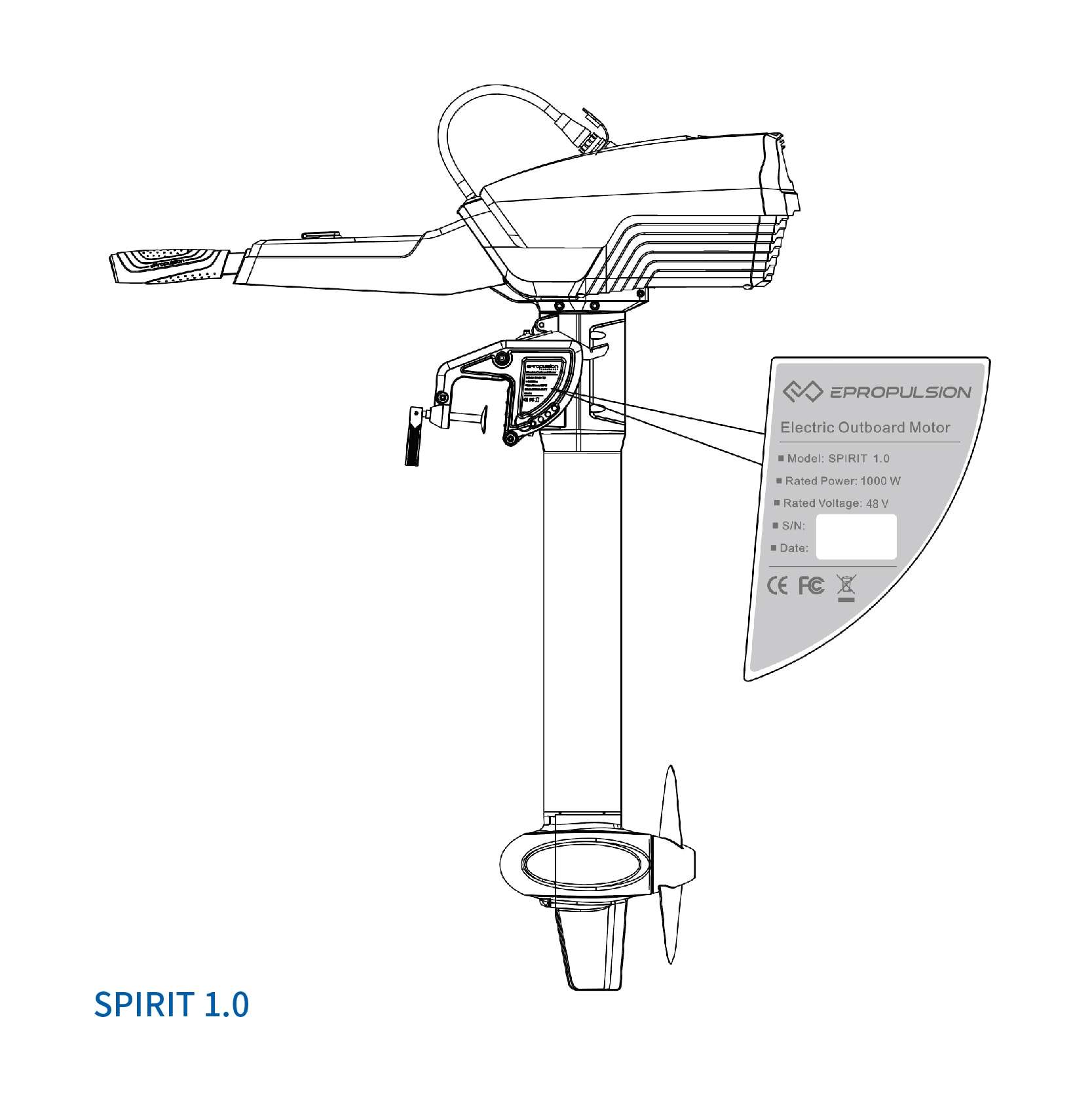
Yachting Monthly
- Digital edition

How to convert a yacht to electric propulsion
- Duncan Kent
- May 22, 2024
Thinking about changing your ageing diesel engine for a new all-electric propulsion system? Duncan Kent offers advice on the pros and cons

There are hundreds, if not thousands of yachts still sailing with 40-year-old diesel engines emitting smoke and pollutants, so is now the time to replace them with a clean, low maintenance, pure electric propulsion instead?
The more I’ve looked at sailing yachts that have been converted from diesel to electric auxiliary drive, the more I wonder why you wouldn’t do it, especially now that the cost of hi-tech boat batteries and solar charging has dropped dramatically.
The immediate advantage of changing to marine pure electric drive (PED) systems is that they’re clean, quiet, smell-free and require minimal maintenance, all of which is very appealing if you’ve ever owned a boat with an ancient, clunky diesel. PEDs offer other benefits too. Their reaction to the throttle is instant, which is a boon when berthing in a cramped marina, and once you’re sailing at a decent lick you can generate free ‘fuel’ from the prop.
The disadvantages are the initial cost of the system (largely due to the batteries) and range issues. On a typical 10m cruising yacht it’s just not possible to store enough energy to motor at full tilt for 10 hours a day, so if you’re planning to make long offshore passages regularly then you’ll either need a lot of patience or enough solar and wind generation to power a small village.
But for coastal cruising, often from marina berth to marina berth (what 85% of today’s boat owners do anyway), a PED system is far more viable, especially once your old iron topsail has reached the point where it’s just so much ballast.

If there’s even a little bit of you that would rather not get your hands dirty tinkering with a temperamental diesel, then electric may just be for you. Photo: Fernhurst Books
The devil you know
A diesel engine can provide heaps of grunt when you mistime the tides and want to escape an oncoming storm, provided, of course, that choppy seas haven’t stirred up the inevitable gloop at the bottom of your diesel tank and blocked up your fuel filters.
It’s also fairly simple tech, so, if you’re mechanically minded and have all the tools and spares on board, you can usually keep it turning over. Fuel can also be carried in jerries too, so if it takes a bit longer to thrash your way back into port you can top it up along the way.
You can also leave the boat for months, even years, on end without much harm coming to it and without needing an umbilical cord permanently attached to the shore to keep the expensive power pack in optimum condition.
A spare charged battery, a pair of jump leads, some fresh fuel and bingo, you’re away. But if there’s just a little bit of you that would love to never have to lift the engine box lid and prefer to start your annual cruise with clean fingernails, then sliding soundlessly out of your berth in the early hours must sound appealing.

Range currently remains an issue with battery capacity the limiting factor, but things are improving all the time
Range anxiety
Just as with electric cars, whenever anyone whose vessel is equipped with a conventional diesel falls into a conversation about electric propulsion for boats, the first question is almost always, ‘How far will it go on a charge?’
Well, the answer I’m afraid is simply, ‘It depends.’ How far do you want it to go? Are you willing to toddle along at four knots, or do you want to charge around from port to port like a Greek charter yacht?
I get that it’s not for everyone and, being a mature seafarer myself, I dread to think about losing all power whilst halfway through the Portland Race in the dark. But as with pretty much anything to do with navigating a vessel, you just need to plan things out carefully in advance.
Article continues below…

Best marine batteries: 6 12V leisure batteries
Good quality, deep-cycle house batteries are not only a sound investment, but also an important safety factor when cruising. There’s…

Electric propulsion ‘not most green’, study finds
Most in-depth analysis yet of marine leisure vessel's propulsion systems finds that using biofuels in traditional engines is greener than…
There are those that say having a finite source of auxiliary propulsion teaches you to sail better, which in many ways is true. The introduction of the powerful modern marine engine has made us all lazy with our tidal planning, knowing, as we do, that you can always resort to the donk to get you home if the log drops below 4 knots or that extra pint in the pub has made you late for the tidal gate.
So, let’s look at some facts. The typical electric propulsion system for a 10m, 6-tonne cruising yacht will usually be designed to provide around five to six hours of gentle cruising in fairly neutral currents at around 4 knots, or maybe 10 hours of motor-sailing, before requiring a charge.
Unlike a car, however, a boat can have solar panels on its deck, coachroof and arch, that can extend this range by another couple of hours, maybe, in the summer.
And then there’s the possibility of regeneration.

Oceanvolt electric ServoProp propeller has electrically controlled pitch which auto adjusts for your speed, or for regeneration
Hydro-regeneration
Nearly all electric motors used in marine propulsion have the capability to turn into a hydro-generator when your speed under sail goes above 4.5 knots or so and the prop/motor is allowed to rotate in reverse.
Regeneration doesn’t make a massive contribution, at best around 750W at 7 knots boat speed per prop, but at 48V (typical electric drive voltage) that’s another useful 15A or so going back into the battery bank.
There are some systems – Oceanvolt’s ServoProp for instance – that incorporate a variable pitch prop. These are capable of a more decent output at lower speeds but are currently seriously expensive.
Either way, I believe solar and hydro-regen should be treated as a bonus when planning your system, not as a given.
If you are unlucky enough to have a few days of no sun or wind you will be back to relying solely on the energy reserves held in your battery bank.
For those who really can’t get over the nagging worry of running out of drive power on a passage, there’s always the option of installing a hybrid system, in which a standby diesel engine is always on hand to get you out of an emergency.

Oceanvolt’s award-winning HighPower ServoProp 25 electric saildrive
Variable pitch props
A normal fixed propeller is designed for propelling the boat and not for generating power as with a hydro-generator. However, Oceanvolt’s DAME award-winning ServoProp saildrive, suitable for monohulls and multihulls from 35-90ft LOA, features a variable pitch prop that combines a high efficiency saildrive with a powerful hydro-generator.
With its unique ability to rotate its propeller blades through more than 180°, ServoProp’s control software adjusts the pitch of the propeller blades to automatically optimise all hydro-generation and propulsion needs.
Oceanvolt claims that a normal fixed propeller generates less than half the power of ServoProp, which it states can produce more than 1kW at 6-8 knots, and 5kW at 10 knots.
It also estimates a 30% increase in forward propulsion, +100% in reverse, and +300% in hydro-generation mode.
Renowned marine propeller supplier, Bruntons, has also launched its Autoprop Eco*Star, designed specifically to propel the rapidly growing number of hybrid and pure electric craft, both motor and sail.
Autoprops are highly efficient because of their ability to auto-pitch depending on engine speed and sea conditions, in order to provide optimum thrust at all times. But with electric propulsion the advantages provided by the new Eco*Star propellers are further extended.
Electric motors provide a constant torque from zero to maximum rpm. Using its auto-pitching ability, the Eco*Star can match its own efficiency curve with that of the electric motor, resulting in more boat speed with less energy.
Eco*Star can spin when under sail allowing the motor to become a generator for recharging the batteries.

Battery setup in an Oceanvolt electric propulsion unit
Drive types
Shaft drive – In most cases it’s possible to retain the shaft and stern gland from an existing shaft drive ICE system, although you’ll probably need a new shaft bearing and coupler unless it is a direct-drive system. The propeller will also probably need to be changed if you want regeneration when sailing.
Saildrive – In many ways electric saildrive units are easier than shaft drives because, as with pods, they come as a complete package with the correct propeller for optimum regeneration. They’re also more efficient at regeneration as the propshaft can be aligned horizontally, unlike shafts, which are usually angled slightly downwards. Some owners choose to convert from a shaft to a saildrive for this reason.
Pod drive – Electric drive pods are similar to saildrives, except they have a direct-drive motor at the bottom of the leg, which allows them to benefit from automatic cooling. Electric drive pods also only require a few small holes in the hull, usually two to four for mounting the unit and one for the routing of the power cable. Pod props and motors are also designed with optimum regeneration in mind.
Most PED systems on small to medium-sized yachts utilise a 48V battery bank. Although there are some that still use deep-cycle AGM battery technology, the only realistic battery chemistry currently available for marine PED systems is lithium-ion.
The safest of the li-ion group is lithium iron phosphate (LiFePO4). While not the most energy dense of the lithium-ion group, they have been proven to be the safest type of li-ion cells to install into a boat, where a battery fire would be catastrophic.
Originally, many professionally built and installed marine electric drive systems utilised other, more volatile types of li-ion batteries such as nickel manganese cobalt (NMC) or lithium manganese oxide (LMO).

System displays can give real time readouts of battery capacity, power usage and remaining range
These types of li-ion are commonly used in the automotive industry for their high capacity, but are wholly reliant on their highly sophisticated battery management system (BMS) to keep them operating within safe parameters.
Apart from preventing a fire risk, the problem with relying on a BMS to monitor the batteries is what happens if something triggers a safety shutdown, causing your boat to lose power completely. A battery shutdown isn’t as drastic as having a lithium battery fire on board, but the total loss of propulsion isn’t ideal, even on a sailing boat.
It’s worse, of course, if you use the same power bank for your house power. Then the loss of your navigation and communications facilities at the same time can be extremely dangerous. For this reason, I would always recommend keeping motor and house banks entirely separate from each other.
If you’re happy to have the more volatile batteries on board or are forced to in order to achieve the desired range, then I highly recommend you have your system professionally designed, installed and commissioned.
Yes, it’ll be expensive, but you’ll sleep at night!

The battery monitoring system will control charge from all sources
Charging a motor bank
Having a much lower internal resistance, li-ion batteries will charge more rapidly than lead-acid batteries because they can accept a much higher rate of charge.
A good quality battery can usually accept a charge up to its own capacity, meaning a 100Ah battery can be charged at 100A. This is called a capacity acceptance rate (CAR) of 1C, and is important when it comes to charging overnight, with the intention of continuing your cruise early the next day.
It also enables various different methods of charging to be accepted simultaneously, provided the combined charge doesn’t exceed 1C, so you can be using solar to its max while also charging from shore power. Another advantage of using li-ion over lead-acid batteries is the BMS can be networked to all charging sources to provide control over the charging regime, plus the data can provide power monitoring at a glance.
Costs of converting
The cost of installing a complete pure electric drive system on a yacht depends on how far and how fast you want to motor between battery charges. The greater the range or faster the speed required, the more battery capacity you’ll need.
A typical 40hp diesel replacement will cost close to £20k including all the parts and installation. A DIY-installed PED replacement would cost £15-£25k, depending on the number of batteries specified, whereas a professionally designed and installed pure electric drive system is more likely to be in the region of £30-£45k.
Enjoyed reading this?
A subscription to Yachting Monthly magazine costs around 40% less than the cover price .
Print and digital editions are available through Magazines Direct – where you can also find the latest deals .
YM is packed with information to help you get the most from your time on the water.
- Take your seamanship to the next level with tips, advice and skills from our experts
- Impartial in-depth reviews of the latest yachts and equipment
- Cruising guides to help you reach those dream destinations
Follow us on Facebook , Twitter and Instagram.

- CLASSIFIEDS
- NEWSLETTERS
- SUBMIT NEWS

How to convert a small blue water, sailboat to an electric vessel on a budget
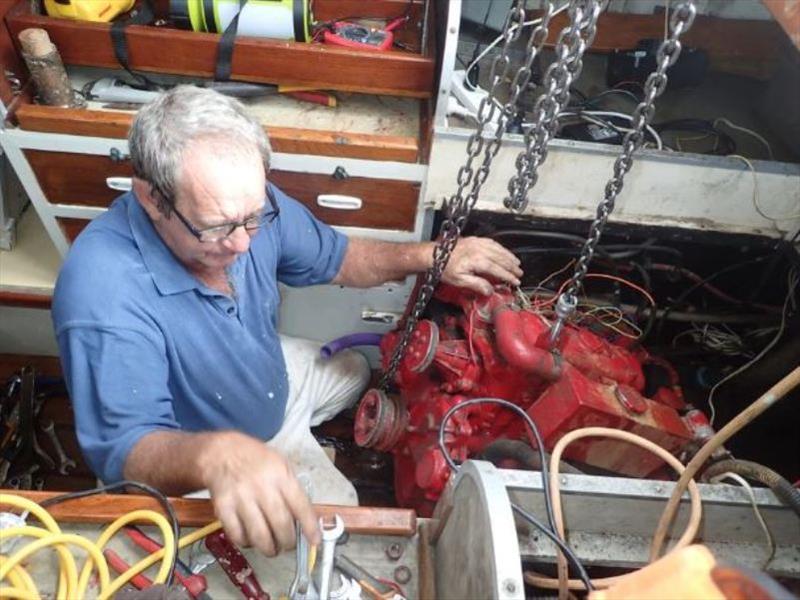
Related Articles

Practical Boat Owner
- Digital edition

Electric sailboat conversion: How my Parker Super Seal went zero-emissions
- Ed Phillips
- April 5, 2022
Ed Phillips embraces zero-emissions sailing by ditching the diesel and converting his Parker Super Seal into an electric sailboat.

Electricity is generated by the engine hydrogeneration system when sailing
Aiming to do our bit for the environment, we recently made a number of lifestyle changes – and one of them was converting our Parker Super Seal yacht into an electric sailboat with the use of an ePropulsion electric motor.
It has proved a great transition in so many ways, taking our sailing experience to the next level. At first it felt a scary, big step into the unknown, but in fact proved a relatively straightforward job.
Skylark is our eco Parker Super Seal. She is an accomplished sailing boat, quick, safe, and fun. She is a joy to sail, we regularly achieve over eight knots through the water.
Our cruising range is generally the South Coast between the Solent and the West Country plus the Channel Islands and France. We have aspirations to take her round Britain , we just need to prioritise the time.
Skylark is primarily powered by sail, a main and genoa (140%) and a couple of asymmetric spinnakers.
Article continues below…

Electric inboard boat motors: 3 yacht owners explain why they made the switch
Just a few years ago there were perhaps half-a-dozen manufacturers making electric outboards. Now there are nearly 40. We covered…

How to convert a classic motorboat to electric power – Ask the experts
Jon Wallsgrove of Sunbury on Thames asks: “Under restoration is my classic 1946 Thames launch that I’d like to convert…

How to choose the right electric outboard engine
Marine electrician Jamie Marley explains what you should look out for when choosing an electric outboard engine for your type…
Leap of faith
Last winter we took the big decision to convert Skylark from diesel to electric propulsion. So her motor is now a 6kW electric engine, with a 9kWh lithium battery, both made by ePropulsion. Leisure power is supplied by Totalcool 12V lithium batteries and solar panels .
Was it a crazy or brave step? Well, somehow taking a perfectly serviceable engine out and going to an emerging technology seemed quite scary, especially when it involved drilling holes through the bottom of your own boat.
Interestingly, having done it, we now feel the most complex part was taking the old diesel out and that if you can put together a piece of IKEA furniture you can convert a yacht to electric. We will never look back, nor go back to a diesel.

ePropulsion pod drive 6.0 Evo 1

The 40 year old Bukh engine before removal
Out with the old
Skylark ’s 40-year-old Bukh 10 engine was still going strong, well bedded-in but was getting expensive to run and maintain. And like all diesels it was not exactly environmentally friendly.
Taking it out wasn’t something to be rushed. Getting the spanners into what is inevitably a very restricted space is an art that takes a while to master.
Persuading the embedded bolts and fixings to loosen is not for the faint hearted. However, a little cussing, the odd cut and much WD40 given time to work seemed to do the job.
In a few hours each day over a couple of days we removed the Bukh. The bits we were worried about, the engine mounts and the drive shaft, turned out to be easier than expected.
The numerous hoses and cables felt a bit ‘Forth Road Bridge’ and seemingly endless, although it was a relatively straightforward task. Just painstaking and on occasions painful.
Having taken everything off the engine the next task was to lift it out. At 140kg this was not a light load. We constructed a frame over the boat using scaffold poles, attached a chain hoist and lifted it gently up and out. It was a dream, all went without a hitch.
Once in the air we had the advantage of having the boat on her trailer, so simply rolled the trailer forward and lowered the engine onto a wheeled pallet. Job done.
With the engine out, there was so much space which got even bigger as we took out the exhaust system. This was actually a genuine ‘five minute job’ and revealed a massive space now used for extra stowage.
Then out came the fuel tank and its attendant tubes and more space gained. But most of all was the joy of saying goodbye to smelly diesel.
Next was to fill the redundant holes in the skin of our ship, the water inlet and outlet, the exhaust outlet. That felt good, the fewer holes in the hull the better!

Drilling holes through the bottom of your boat is a daunting prospect
Finally, the ‘Big Clean’! The bilges of any boat are always a bit grimy, but years of oil and muck warranted a really good scrub. Traffic film cleaner worked well as a degreaser, then loads of soap and water – a task made so much easier knowing that it was the last time our lovely hull would be subjected to those yesteryear hydrocarbons. Hurrah!
Finally we had a clean slate and perfect foundations for the new installation.
In with the new
This proved to be so straightforward, despite being a little daunting at first. Just like IKEA kits, with a good read of the instructions and marshalling the right tools we set to with an engineering chum (to bolster our confidence!)
First, we spent a good amount of time planning. Second, we glassed a 50cm x 50cm marine ply pad onto the inside of the hull, as belt and braces to spread the load of the engine fitting. Essential, no. Diligent, yes. We felt it ensures our engine will be safe and securely mounted for the coming decades.
The ePropulsion Pod engine is totally external and is simply secured to the hull with three 10mm bolts. All that’s required is a 66mm hole for the cables to feed through.

Feeding the cabling through the hull from pod to battery

Shaping the mounting plate to the contour of the hull

Testing the pod’s position before securing it
Carefully working out how and where to position the engine took a good amount of time. We cut off the last 15cm of the drive shaft cowling, otherwise our propeller would have been too close to the rudder. The cutting was easy (in retrospect). Shaping the spacer to the shape of the hull so the engine would sit vertically did take time.
In retrospect, a sharper cutting edge, and more confidence, would make it much simpler next time. Engine fitted, next we moved on board to install the controller, the charger, the morse and the control panel, all very straightforward.
Our top tip – place the control panel in an easy to see position with the instrument cluster on the forward cockpit. The data is really useful and benefits from easy viewing while at sea.

Scaffold pole crane and block and tackle were required to lift the new battery aboard
Next came the battery. Our ePropulsion E175 9kWH battery is compact at 52 x 55 x 27cm although quite heavy at 87kg. It fits perfectly on the engine mounts, the load spread by a piece of marine ply, and takes up only half the space of the old engine.
We lifted it on board using the same chain hoist, lowered it gently into the cabin and slid it forward on an old mountain skateboard that I found in the garage. It was so much simpler than we had dared hope.
Finally, connecting it all up was a steady, logical process that needs to be approached methodically, but it’s not difficult. Then, the big switch on. A press of a button and all springs to life.
I still marvel every time I switch it on. Apart from a few lights, there’s little to show or hear! Push the morse forward and silent, powerful thrust results.
Subsequently, we haven’t looked back and will certainly never go back to burning noisy, smelly, dirty, hydrocarbons with all the damage that they do to our fragile environment.

New battery in situ where the Bukh diesel engine used to be
12V leisure system
Prior to conversion Skylark carried two 12V batteries. These worked well for day sailing, charged by the engine when motoring and trickle charge solar when at rest.
However, with an electric engine there is no alternator so power can get a bit short living aboard after a couple of days out, running instruments, charging phones, lighting etc, without a means of recharging power.
A new solution was required and after much experimentation we have gone for two Totalpower 500 12V lithium leisure batteries, one for the instruments and one for the Totalfreeze fridge. This provides so much power and is easily maintained by the Totalsolar 100 solar panel.

The control box and charger in place behind the battery with lots of stowage space still available
Lithium batteries have many advantages. You can use all the capacity, as opposed to around 50% with lead acid and they can run 240V appliances as well as 12V. In-battery data screens provide all information live.
Weighing only a few kg – less than a quarter of the weight of lead acid batteries – they are much easier to use and so much more versatile.
Wind generation
Currently, we carry an experimental 48V wind generator. So far it is proving most successful. It is powerful, quiet, and neatly out of the way.
The great benefit is that on a swinging mooring, or at anchor, it means we rarely need to use 240V. We are continuing our research into which brands to select until we have enough data to make informed decisions.

Skylark on her mooring in Chichester Harbour
Solar generation
We carry two 12V Totalsolar 100W solar panels This means that we charge the fridge battery in parallel with the leisure batteries. We now have much more 12V capacity than we need – and there is now always ice on tap!
Tenders and paddleboards
To complete our eco set-up our tender has an ePropulsion electric outboard recharged by hydrogeneration and solar. We carry a lightweight ThrustMe engine for runs ashore. Even our Sandbanks Style paddleboards have an electric Vaquita motor, enabling us to always get back to the boat against strong winds and tides.

Tender has an electric outboard engine too
Electric sailboat experience
Some people fear running out of power, but it’s not proving an issue for us. Electricity is generated by the engine hydrogeneration system when sailing. Input is around 100W per knot when sailing between 4 and 10 knots, at the cost of 0.7 knots of boat speed. In addition, we have the wind generator and on occasion 240V mains power.
Solar panels charge the 12V system when living aboard. Skylark lives on a swinging mooring and on the odd occasion when we want to charge from the mains, usually before a long passage, Chichester Harbour Master and MDL Marinas supply 240V electricity free of charge to electric boats at four points around the Harbour (an eco practice worth encouraging).
In reality we rarely use more than a small proportion of the engine’s potential. Skylark weighs approximately three tonnes loaded. We normally cruise at about 975W at just under four knots, which gives over nine hours of motoring.

Silent motoring under engine catches others unawares
A full 6kW gives around eight knots for a much shorter time. We lived aboard for three weeks in the summer, charged just three times (as there was very little wind), and never went below 50% on the battery.
Motor sailing back 29 miles from Southampton Town Quay in under 4 knots of wind, with strong tides both with and against us, we used less than half the battery.
Electric sailboat conversion costs
At the time of conversion we’d retired from the commercial world and had been philanthropists for eight years, gifting our time, so cost management was a critical factor. We spent a good deal of time looking at costs, and the conversion has dramatically reduced our running costs. The logic is as follows:
Bukh annual running costs
I’m a reasonably capable with practical maintenance, however the single cylinder Bukh with its quirky oil seals and gaskets, took me days of work, so it was more practical to work with a professional engineer at a cost of around £300pa for parts and labour, fuel was around £100pa, my morse replacement in its last year was £268, and a new 12V engine starter battery at £120 making a total of £788 spent in 2020.

Pod drive awaiting its prop. New skeg just forward protects the drive from grounding
Electric sailboat running costs
The total cost of the engine set up, including engine battery controller etc. was £6,800. The chain hoist cost £35, 66mm drill bit £12, fuel £0 (free electricity supplies in Chichester Harbour) so total installation cost £6,847. This engine should last for decades.
Assuming a conservative write-down over 15 years, this equates to £456pa. Economically, going electric has been a great decision. It costs around half the annual cost of before, and is so much less damaging to the planet.
Electric sailboat liveaboards
Our three weeks away were an absolute joy – silent eco sailing and silent motor-sailing in the many days of calm we experienced this summer. Everyone stops us wanting to know how we do it, as we silently cruise past 38-footers!

Electrical power is generated while sailing
Range anxiety? We are totally over it! We did passages of up to 40 miles in little wind and didn’t use more than 50% of our battery capacity.
We motored from the Solent into Poole Harbour where we spent several days pottering and stand-up paddleboarding, only charging from shore power prior to embarking on our next long passage as due diligence, since the calm weather had limited our wind generation.
We have found that, as with all electric engines, there is a huge amount of torque giving fabulous manoeuvrability and the joy of silent motoring.
At steady speeds she uses very little power, then faster speeds seem to push the effort up on a roughly cube basis. This is great at encouraging us all to be traditional and work with the wind and tides not despite them.
Having an electric engine also totally changes the way one sails, tacking up wind with just 2-300W gives an extra couple of knots and an additional 10° of pointing angle (as the apparent wind shifts), and all this silently. Wow!
Electric sailboat conversion: What we learned
Switching to lithium.
We haven’t found anything to fear and it takes our sailing to the next level. The one thing that took us a while to suss out was how to run our leisure systems as lead acid batteries only last a couple of days with no alternator on hand!
Our learning was to ditch lead acid in favour of lithium, a quarter of the weight and you can use all the battery power, not just 50% of it. We now have so much power that we happily run a TotalCool fridge solar charged.
We will never go back to hydrocarbons. Going electric is such an all-round better experience as well as making a significant difference to the fragile marine environment. Downsides? The only one we’ve found is that folk joke they’re reluctant to race us, as they can’t tell if we’re running the engine!
Looking to switch to an electric outboard engine ? Click here for advice on how to choose the right engine for your type of cruising
Why not subscribe today?
This feature appeared in the April 2022 edition of Practical Boat Owner . For more articles like this, including DIY, money-saving advice, great boat projects, expert tips and ways to improve your boat’s performance, take out a magazine subscription to Britain’s best-selling boating magazine.
Subscribe, or make a gift for someone else, and you’ll always save at least 30% compared to newsstand prices.
See the latest PBO subscription deals on magazinesdirect.com

HYBRID AND ELECTRIC MARINE POWER AND PROPULSION SYSTEMS

Zero Emission
No environmental restrictions

No high voltage risk
Remote System Interface
State of the art Lithium Ion battery technology
Safe installation and operation

Instant power output for maneuverability
Zero to full torque in an instant
No waiting for engine rev to settle
No pre-start warning beep
Best quality components available


Patented Technology
Hydro power regeneration
Superior thrust efficiency and energy capture
Remote diagnostics
Low maintenance
System Solutions for a Range of Marine Activity
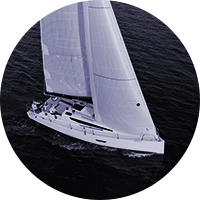
THE FACTS ABOUT ELECTRIC POWER, BATTERIES AND PROPULSION
Today's electric motor technology has already moved from
the open road to the open ocean.
Instant High Torque
Electric motors are in constant ‘stand by’ mode; you can engage the control lever at any time for instant forward or reverse propulsion.
Electric motors achieve instant torque with Electromotive Force while internal combustion engines need to build RPMs gradually by increasing piston firing frequency.
Hydro Generation
At sailing speeds over 6 knots Oceanvolt systems are able to generate significant power for recharging the battery bank by activating at the touch of a button.
Power regeneration increases exponentially with each additional knot of speed.
Lithium Ion batteries are superior to other battery storage technology; highest storage capacity, high effective current delivery, high charge capacity resiliency and wide temperature range performance. In today's digital age, where everything is just a click away, 1xbet mobile takes a significant chunk of the online casino services sector. Starting as an online casino service in 2007, 1xBet expanded its services in 2014 to include sports betting. Fast forward to 2018, and they marked their entry into the Indian market. Their app and website, designed in a calming blue and white hue, are not just a treat for the eyes but are also super intuitive. With a support interface that covers 50 languages, including Hindi, the platform ensures that language is no barrier to placing your bet.
Oceanvolt highly skilled technical team ensures proper installation and system-optimization. Only the highest quality Li-Ion batteries are used - to ensure performance and safety.
For those interested in a hybrid solution, generators are a highly efficient way to extend range while at sea.
DC generators have the advantage of rapid recharging capability.
AC generators are, generally, smaller and even portable which means that the generator can be aboard only in situations where longer motoring might be required.
Battery recharging is accomplished with shore connection, hydro generation (an integrated part of all Oceanvolt systems) and/or solar panels.
In Hybrid solutions , a generator (either AC or DC) can be used to recharge batteries / extend motoring range.
Integrated components
It is essential that all system components are properly selected and installed.
Our team of highly skilled technicians ensure that all components are compatible and that system management software is optimized.
Oceanvolt blog

WHITEPAPER: HORSEPOWER VS KILOWATT
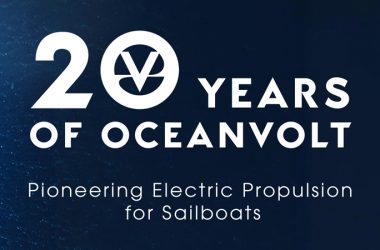
Celebrating 20 Years of Oceanvolt!
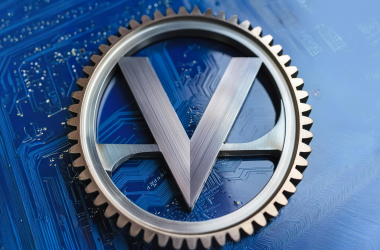
HIRING: MECHANICAL ENGINEER
Owner testimonials.
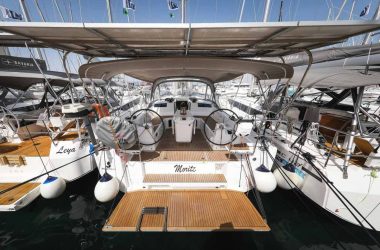
Electric Beneteau Oceanis 40.1 “Moritz”
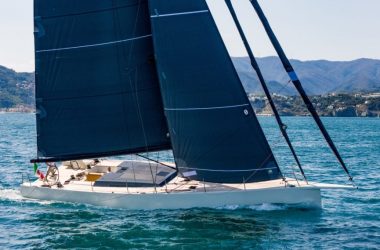
Maxi Dolphin MD55
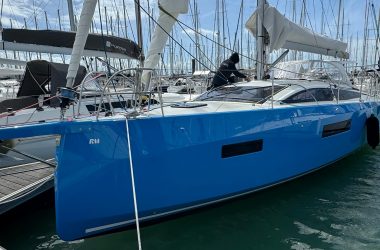
RM Yachts RM 1180
- Sean +64 27 588 8916
- [email protected]

Convert your Vessel to Hybrid or All-Electric
We offer a complete service beginning with system design to Convert to Electric. Thereafter our engineering staff can remove you old engines and power systems where necessary.
We have a complete engineering service and can take your yacht from beginning right through to commissioning and sea trials.
Option 1 – a hybrid system that includes a highly efficient generator instead of a complete Convert to Electric.
Option 2 – Convert to Electric with an all-electric and solar solution, which means no more exhaust fumes aboard sailboat ever again.

GET IN TOUCH WITH US
Keep in Touch
Subscribe to our newsletter for the latest news, promotions and special deals.
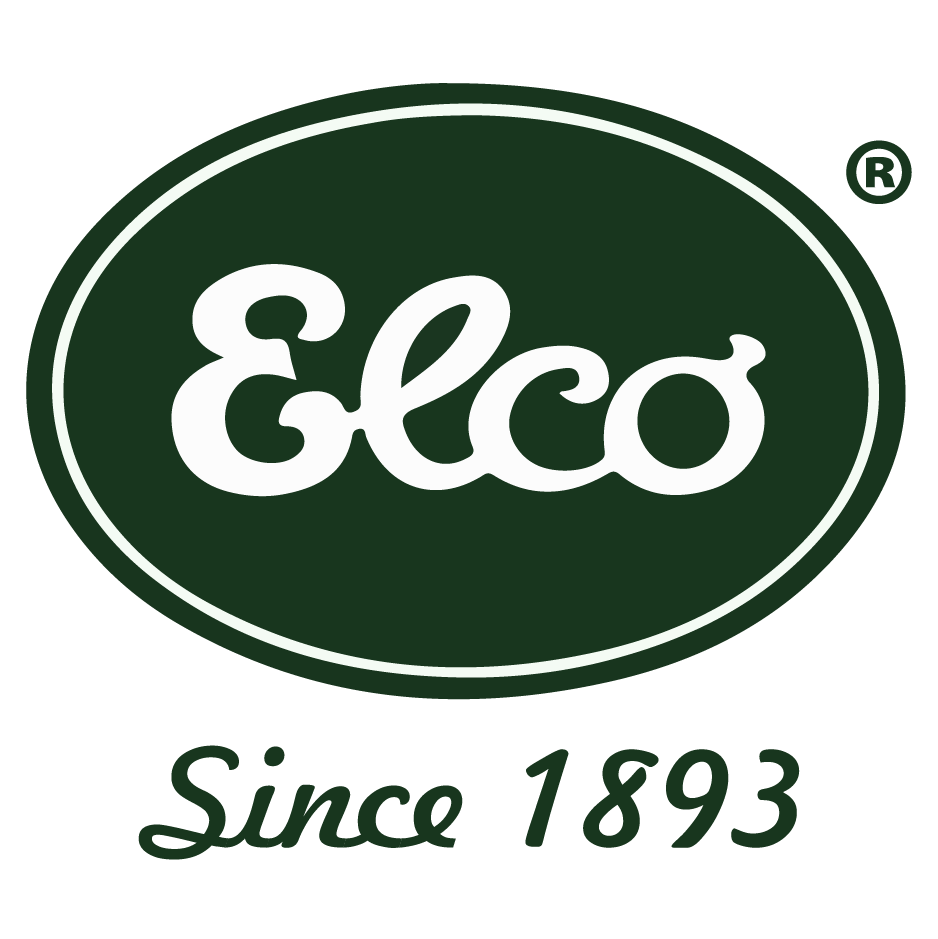
- Electric Inboard Motors
Showing all 7 results
Product categories
- Electric Outboard Motors 6
- Electric Inboard Motors 7
- Batteries 6
- Marine Battery Chargers 10
- Marine Battery Cables 2
- Marine Battery Monitors 6
- Electric Tilt and Trim Options 2
- Outboard Motor Propellers 4
- Marine Coupling Hardware 3
- Electric Motor Mounts 1
- Remote Throttle Options 3
Electric Inboard Boat Motors
Electric inboard boat motors from Elco Motor Yachts are suitable for new boats, or as an upgrade to existing vessels. Our electric inboard boat motor conversion kits can turn a noisy gas-powered boat into a serene pleasure boat for quiet enjoyment of nature’s beauty.
Our electric inboard boat motors, ranging from 6HP to a robust 200HP, are a testament to Elco’s commitment to innovation and sustainability. We meticulously craft each electric inboard motor to offer an unmatched boating experience. Whether you’re navigating serene lakes or braving the open ocean, our motors will power your journey with efficiency and reliability.
For sailing enthusiasts, our electric sailboat motors are game-changers. The silent operation of these motors enhances the tranquility of sailing, allowing you to listen to the waves lapping against the hull and enjoy the sea breezes without the disruption of engine noise.
If you’re looking to retrofit your existing watercraft, consider our electric inboard boat motor conversion kits. These kits enable you to transform your gas-guzzling boat into a quiet, eco-friendly vessel. Experience the joy of boating in harmony with nature, knowing that your adventure is leaving minimal environmental impact.
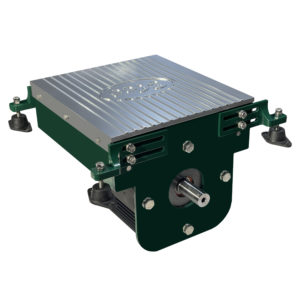
EP-6 Electric Inboard
Comparable HP: 6HP Voltage: 24 Volts Suggested Battery Package Options: Deep Cycle AGM - Victron - 12V / 110Ah (2 pack) Lithium Iron Phosphate - 24V / 100Ah (single pack)
EP-12 Electric Inboard
Comparable HP: 12HP Voltage: 48 Volts Suggested Battery Package Options: Deep Cycle AGM - Victron - 12V / 130Ah (4 pack) Lithium Iron Phosphate - 48V / 100Ah (single pack)
EP-20 Electric Inboard
Comparable HP: 20HP Voltage: 48 Volts Suggested Battery Package Options: Deep Cycle AGM - Victron - 12V / 165Ah (4 pack) Lithium Iron Phosphate - 48V / 100Ah (2 pack)
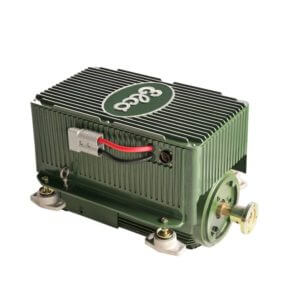
EP-40 Electric Inboard
Comparable HP: 40HP Voltage: 108 Volts Suggested Battery Package Options: Deep Cycle AGM - Victron - 12V / 165Ah (9 pack) Lithium Iron Phosphate - 96V / 100Ah (6 pack)
EP-70 Electric Inboard
Comparable HP: 70HP Voltage: 108 Volts Suggested Battery Package Options: Deep Cycle AGM - Victron - 12V / 220Ah (9 pack) Lithium Iron Phosphate - 96V / 100Ah (8 pack)
EP-100 Electric Inboard
Comparable HP: 100HP Voltage: 144 Volts Suggested Battery Package Options: Deep Cycle AGM - Victron - 12V / 220Ah (12 pack) Lithium Iron Phosphate - 144V - (Call for custom options)
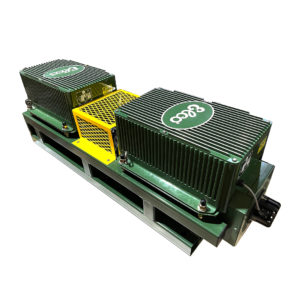
EP-200 ELECTRIC INBOARD
Comparable HP: 200HP Voltage: 144 Volts Suggested Battery Package Options: Deep Cycle AGM - Victron - 12V / 220Ah (24 pack) Lithium Iron Phosphate - 96V / 100Ah (Custom setup)
Award-Winning Electric Motors

The Trusted Solution for Electric Boating
Our unbeatable, award-winning electric inboard motor system is not only highly-reliable but it’s also one of the most powerful inboard motors on the market. With a maximum of 200HP and over 50,000 hours of service life, you can be confident in your choice to go electric with an Elco electric inboard boat motor.
At Elco, we make electric boating accessible by design. Our electric motors for boat inboards are intentionally manufactured with a plug-and-play design that makes installation simple. If you’re looking for a powerful motor for a new build or you’re retrofitting the motor for an existing inbound system, our electric propulsion system is the superior option for electric boating.
Electric inboard boat motors by Elco offer numerous advantages to boat owners. The incredibly versatile design makes our electric inboard motors well-suited for a wide variety of boats. Sailboats, launches, trawlers, catamarans, workboats, water taxis – the range of compatible boats is vast. If your water vehicle measures between 15 and 120 feet, it could be eligible for an exceptional upgrade to our powerful electric inbound propulsion system.
In regards to powerful electric boating, the Elco Electric Propulsion System gives you the opportunity to customize your boating experience. We offer a wide range of capabilities when it comes to horsepower. From 6HP all the way to 200HP, you can find an electric boat inboard motor that works perfectly for your vessel. Swift and efficient electric boats are possible with the application of an Elco electric inboard motor.
The Elco Electric Propulsion System is all-encompassing, meaning we provide you with all the essential components you need to power your vessel. Our plug-and-play format allows users to have their newly electric inboard system fully operational in just minutes. This level of convenience and simplicity is something you can’t find amongst other electric boat inboard motors.
We’re proud to offer a simple yet dynamic design that is highly efficient and exceptionally powerful. Electric re-powering is much more straightforward than a diesel replacement, and we’ve worked to streamline this process even further. Our electric motors are also highly reliable. We employ AC induction for our inboard systems, making them up to 40% more efficient than competing DC induction motors on the market. They accelerate faster and create more torque all while requiring minimal maintenance.
The famed Elco inboard electric motor is simple and reliable while being incredibly powerful. It not only offers users a uniquely impressive experience but it’s also considered the premier modern solution. Boating enthusiasts know first-hand how important it is to take care of our waters. The planet depends on us to respect and care for the environment. With our electric inboard propulsion system, you can have an exciting boating experience while reducing your carbon footprint. This way we can all enjoy the beautiful waters for generations to come.
Quick Shopping Links
- Electric Outboard Motors
- Electric Outboard Motor 5 HP
- Electric Outboard Motor 9.9 HP
- Electric Outboard Motor 14 HP
- Electric Outboard Motor 20 HP
- Electric Outboard Motor 30 HP
- Electric Outboard Motor 50 HP
- Electric Inboard Motor 6 HP
- Electric Inboard Motor 12 HP
- Electric Inboard Motor 20 HP
- Electric Inboard Motor 40 HP
- Electric Inboard Motor 70 HP
- Electric Inboard Motor 100 HP
- Electric Inboard Motor 200 HP
Battery Chargers
- NOCO GEN 2 Deep Cycle Battery Charger
- NOCO GEN 3 Deep Cycle Battery Charger
- NOCO GEN 4 Deep Cycle Battery Charger
- NOCO GX2440 Lithium Battery Charger
- NOCO GX4820 Lithium Battery Charger
- EV- AGM / Lithium Battery Charger
- Electric Boat Motor Batteries & Accessories
- Elco Classic Launches
- Elco in the News
- Customer Stories
- Press Releases
- Get Updates
- Benefits of Going Green
- Our Technology
- Frequently Asked Questions
- Honoring Heroes
- Tell us about your boat
- Dealer Application
- Dealer Log-In
- Return Policy
© 2024 Elco Motor Yachts. All Rights Reserved. Sitemap.

- Privacy Overview
- Strictly Necessary Cookies
This website uses cookies so that we can provide you with the best user experience possible. Cookie information is stored in your browser and performs functions such as recognising you when you return to our website and helping our team to understand which sections of the website you find most interesting and useful.
Strictly Necessary Cookie should be enabled at all times so that we can save your preferences for cookie settings.
If you disable this cookie, we will not be able to save your preferences. This means that every time you visit this website you will need to enable or disable cookies again.
Electric Yacht Best Sellers: QuietTorque 10.0 QuietTorque 20.0 QuietTorque 30.0LC
- Electric Propulsion
- Conversion and Stories
- Product Data Sheets
- Installation Manuals
- Customer Stories
- Is Your Boat in this List
Electric Yacht Pacific
Clean! Green! Quiet! electric propulsion
(626) 298-2262
Clean! Green! Quiet! Sailboat Propulsion
Electric yacht plug-n-play systems, do you see your boat (some california conversions).
Clean Green Quiet
- Boats from 2500lbs to 50000lbs
- 3 year Warranty marine systems
- 1000 installations in NA
- Over 300 West Coast installations
10 Electric Yacht Systems
- QT2.5DD 24v direct drive $4995
- QT3.6DD 36v direct drive $4995
- QT5.0DD 48v direct drive $5495
- QT10.0SD Saildrive $10495
- QT15.0LCSD Saildrive$14695
- QT20.0SD Saildrive $14695
- QT30.0LCSD Saildrive$20995
- QT45.0LCSD Saildrive$26995
- Quiet Torque 60.0LC $32995
- Lifeline AGM
- Battle Born LiFePO4
- Dakota 48v 96ah LiFePO4 $2699
- Spirit 1.0+
- Spirit Battery
- Navy 3 and Navy 6
- POD 1 , POD 3, POD 6
- Delta Q IC1200 & QuiQ 1500
- ePropulsion 48v 20a
Alberg 30
Alerion 28 express
Allied Seawind 30
Angelman ketch Alpha 30
Angelman Sea spirit
Balboa 27
Beneteau First 31
Beneteau Oceanis 400
Beneteau First 42s5
Bristol Channel Cutter
C&C Landfall 38
C&L Cutter 37
Cal 2-27
Cal 2-29 Cal 29
Cal 30 Cal 34
Cal 39 Cal 40
Capri 30
Catalina 27 Catalina 270
Catalina 30 Catalina 320
Catalina 34 Catalina 36
Catboat
Challenger 32
Cheoy Lee 35
Columbia 24 Columbia 40
Columbia 8.7 & 9.6
Columbia Sportboat 30
Cookson Yacht Frers 43
Coronado 44
Correctcraft Cuddy Nautique
CT 41
Custom 37ft Sloop
Custom Runabout 18ft
Downeaster 32'
Ericson 27 Ericson 29
Ericson 30+ Ericson 31 Indep
Ericson 32 Ericson 35
Ericson 36C Ericson 38
Formosa 41
Freedom 32' Freedom 33
Frisco Flyer
Fuji 35
More California conversions)
Best seller - quiettorque 30.0 lc plug and play -shaft or saildrive.
Gemini MC105
Gulf 32 Pilothouse
Gulfstar 39 Sailmaster
Harbor 25
Hinckley Bermuda 40
Horseman 43 XRC
Hunter 42
Ingrid 38
Irwin 34 Irwin 38cc
Irwin 54
Islander 28 Islander 32
Islander 33 Islander 36 Freeport
Islander Wayfair 32
Konasu 36
Laurin 28
Marinier 31
Martini 21
Morgan 28
Newport 27 Newport 30
Nonsuch 26U
O'Day 27 O'Day 32 O'Day '37
Pacific ketch 45
Pearson 30 Pearson 323
Pearson 35 Pearson Triton
Peterson 30 Peterson 34
Rafiki 35
Ranger 29
Ranger 33
Santana 30/30
Schiada 10
Schock/Duffy 18'
Spitsgatter 25
Stonehorse
Synergy 1000
T32
Tartan 30
Tayana 37
VENT DE FETE 30
Wayfarer Islander 32
Westerly 31
Westsail 32 Westsail 43
William Garden Ketch 46ft
Yankee 30
Best Seller - QuietTorque10.0 Plug and Play - Shaft or Saildrive
Q uiet Torque 30.0LC
From $14495 & $19995 (Saildrive)
- 30kW power (28.0kW continuous)
- Equal power to about an 55hp diesel
- 170lbs - Aluminum and Stainless steel (saildrive about 210lbs)
- Dual PMAC power heads
- All electronic control
- Liquid Cooled
- three year warranty
Quiet Torqur 10.0 Electric Yacht
From $5295 to $10.495 (Saildrive)
- 10kW power (8.0kW continuous)
- replaces 1diesels form 15 to 20hpl
- 70lbs - Al and Stainless steel
- PMAC power head
Conversion Stories
Read what some of our 1000 clients have to say about their conversions. Check out our boat conversion list - Find you boat!
Want to talk to a client, They love to talk about their conversions.
Why Electric? Who is Electric Yacht?
Electric propulsion is the ideal replacement system for day sailor, racer, or cruiser.
- Affordable systems from 2.5kW (performs like a 3hp) to 60kW (performs like a 90hp diesel).
- A system sized to support every boat.
- Ideal for daysailing - always ready to sail
- Matching power for coastal cruising
- Able to meet the needs of the ocean crossing cruiser
Hinckley Bermuda 41 - QT20.0 - Ventura CA
Electric Marine Propulsion is all we do
- Electric Yacht Pacific is the new address for Electric Yachts of California.
- Electric Yacht Pacific has over 250 systems conversions from Alaska to California to Hawaii
- Providing the finest affordable electric propulsion systems
- Complete systems - engineered, built , tested and ready to install
Custom Vintage 18ft wooden runabout - QT5.0 - Newport Beach CA
Check out our systems and tell us about your boat
We will provide you with a detailed analysis of your boat with speed and power and range data. You will know what to expect when you go Clean! Green! and Quiet! Talk to or meet many of our satisfied clients
Ingrid 38 - QT20.0 - British Columbia Canada
Premier US Electric Propulsion for North America
- Engineered and Built in the US
- Tested and Shipped to you to install
- Plug-n-Play Systems
- Marine Throttle and Monitor
- Fuse and On/Off Switch
- Optional Binnacle Mount for Wheel
- Options Current Sensor for Solar and generator
Contact Us for free evaluation
Boat make and model (if custom: loa, lwl, beam, displacement).
This site is protected by reCAPTCHA and the Google Privacy Policy and Terms of Service apply.
We are on line daily
We are available to discuss electric propulsion for your boat: providing detail computer propulsion models to help you understand your options.
laguna Niguel
(626) 298-2262 or 855 339 2248 x 1
Available daily on line
The more we know about your sailing and cruising plans, the better we can serve you. You will receive a complete detailed analysis of your boat with speed, power, and range data in an easy to understand and evaluate format.
Copyright © 2023 Electric Yacht Pacific - All Rights Reserved.
Powered by GoDaddy
This website uses cookies.
We use cookies to analyze website traffic and optimize your website experience. By accepting our use of cookies, your data will be aggregated with all other user data.
- Sailboat Kits & Accessories
- Motorcycle & Kart Kits
- AC & Large Motor Kits
- Gear Reduction & Motor Plates
- Battery Management Systems
- Chargers & Accessories
- New Lithium Batteries
- Used Lithium Batteries
- DC-DC Converters
- Displays and Instrumentation
- Throttle Controls
- Motors DC and PMAC
- Motor Brushes & Encoders
- Sevcon Controllers
- Curtis Controllers
- Alltrax Controllers
- Programmers
- Cooling, Heating & Pumps
- Connectors & Wiring
- Contactors & Switches
- Garage Sale
- Warehouse Overstock Sale
- Vehicle Control Unit (VCU)
- Our Company
- Why Choose ThunderStruck
- Conversions
- Electric Vehicle Books
- Recommended Links
- Return/Cancellation Policy and Warranty Information
- Support Request
- Ask a general question...
- Installation

18KW Liquid Cooled Sailboat Kit 72v

- Description
- Manuals & Downloads
- Included Components
Eliminate noxious diesel fumes and the cost of filling up at the pump and enjoy your sailboat to the fullest with this DIY electric conversion Kit. The 18kW kit features a liquid cooled Motenergy motor, paired with a Sevcon Gen4 controller to produce a whopping 18kW continuous at 72v!
Customers have used this system in boats up to 25K pound displacement. It is liquid cooled - and can use your existing heat exchanger, or use our radiator, fan and pump - you supply the hose. Do not run saltwater through the motor .
All our systems have reverse on-the-fly and contactor disable features. "Brushless" means that the motor does not have brushes that will wear out over time, nor will it be a dangerous source of ignition for on-board gas appliances. In the U.S. and Canada, brushed motors are only legal for marine use if onboard appliances and accessories use kerosene or diesel (not propane or gasoline) due to the potential for internal motor arcing.
The reverse on-the-fly feature allows for rapid thrust direction changes without shifting. Aditionally, regen is enabled, allowing current to be put back into the batteries from the spinning prop while under sail. Regen effectiveness depends on your sailing speed, prop design, and may not be possible in all applications, but it is an adored feature for those who are able to use it.
Due to the high RPM of the Motenergy Brushless motor, we recommend using our 12-24kW gear reduction rather than direct-drive to improve efficiency, provide proper torque, cooling, and help prevent cavitation. Typical reduction is around 2.67:1, but this ratio will depend on the prop RPM required to reach hull speed. Ideal reduction will enable the motor to spin your prop at the hull speed RPM of your prop when the motor is spinning at its max RPM. The 18KW kit is programmed to spin at a maximum of 3300 RPM by default.
What batteries should you use? Most customers are happy with sealed, deep cycle lead acid, sourced locally to save on shipping. Use 6 in series to get 72v and 100 amp hour capacity minimum.
Those of you that are still in the "research phase" of your conversion should visit one of the electric boats discussion groups and talk to others who are doing or have already done electric conversions.
* Please describe your battery pack so that we can program your motor controller to match - then you won't need to ship it back to us. Minimum battery information includes cell chemistry, amp hour rating, overall pack voltage, series cell count and arrangement.
* If you choose not to use a gear reduction, a thrust bearing in line with the prop shaft is required, since most motors are not rated for axial/thrust loads on the shaft.
* Before you pull your old engine, support the prop shaft for reference so you can properly align the new system.
* A heatsink for the controller is recommended by the manufacturer, and is included in the kit.
Check out our instructional wiring video!
See the CAN Translator page for a budget display option
Sevcon Wiring Diagram with ET throttle
Sevcon Wiring Diagram with Wigwag throttle
Cooling Notes Sevcon
Sevcon Sailboat Kit Installation Instructions
E-Boat Modeling Spreadsheet (.xls) *Use this to calculate your power needs*
E-Boat Modeling Spreadsheet Manual (.doc)
Vicprop Calculator
Mechanical Drawing
Sevcon Gen 4 Controller info
Included Components (may vary based on kW rating and parts availability)
- Motenergy ME1616 Liquid-Cooled Brushless Motor. Provide your own cooling circuit or use ours.
- Controller: Sevcon Gen4 8055 with regen
- Model 827 Display
- ET-134/126 directional throttle - recommended if you plan to use an existing throttle lever. The ET Actuator (included) connects to your existing throttle cable. Optons: ET-134 has a Neutral Detent, ET-126 has a Spring Return.
- Wigwag throttle lever - recommended if not reusing your existing lever
- Sealed Main Contactor
- Liquid cooled heatsink included. May also select radiator, fan and pump option. Also may opt out, but cooling is needed for this high output system.
- Every kit is individually bench tested
- Complete wire harness with 10ft key and throttle cable lengths
- Wiring instructions
No posts found
| Contact | About Us | Service | About You |
|---|---|---|---|
| | | | |
© 2004 - 2024 Thunderstruck Motors. Powered by Ecommerce software with PayPal
| Monday - Friday 8 AM - 4 PM EST 315-701-0635 |
| Product Line Downloads Company Quote Request Links Photo Gallery Tech Support | + BUY NOW + BUY NOW |
| Vehicle Model | ElectraCraft 18LS |
| Top Speed | 7 mph |
| Cruising Speed | 4 mph |
| Voltage | 48 Volts |
| Range at Crusing Speed | 9 hours |
| Weight | 2100 lbs |
| Battery Specs | (8) Trojan T-125 6V batteries |
| Motor | 170-509-0004 |
| Controller | XCT-48500 |


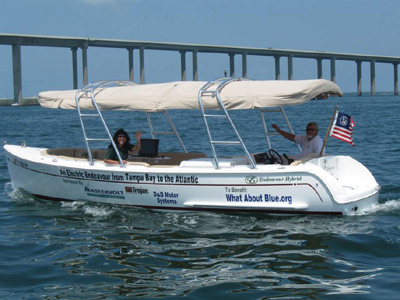
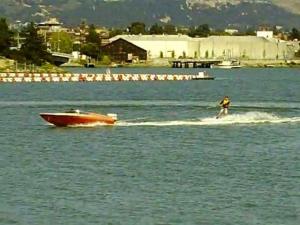
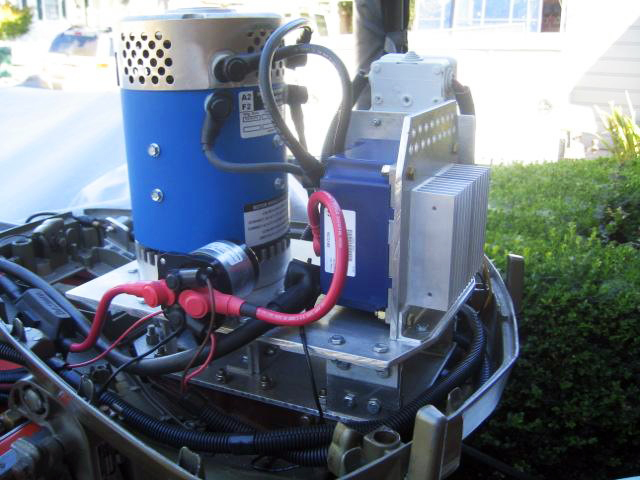
| ||||||||||||||||||||||||||||||||||||||||||||||||||||||||||||||||
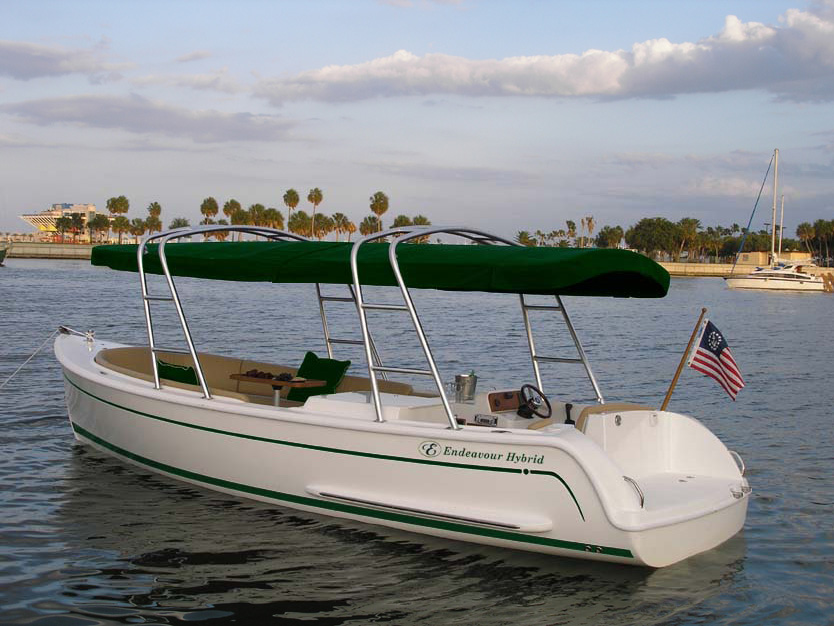
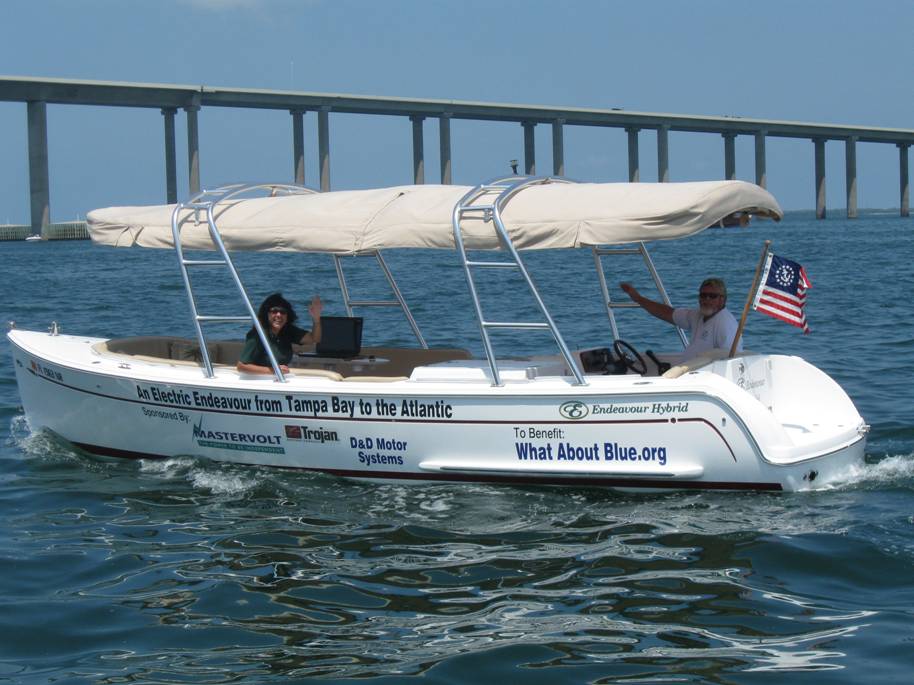



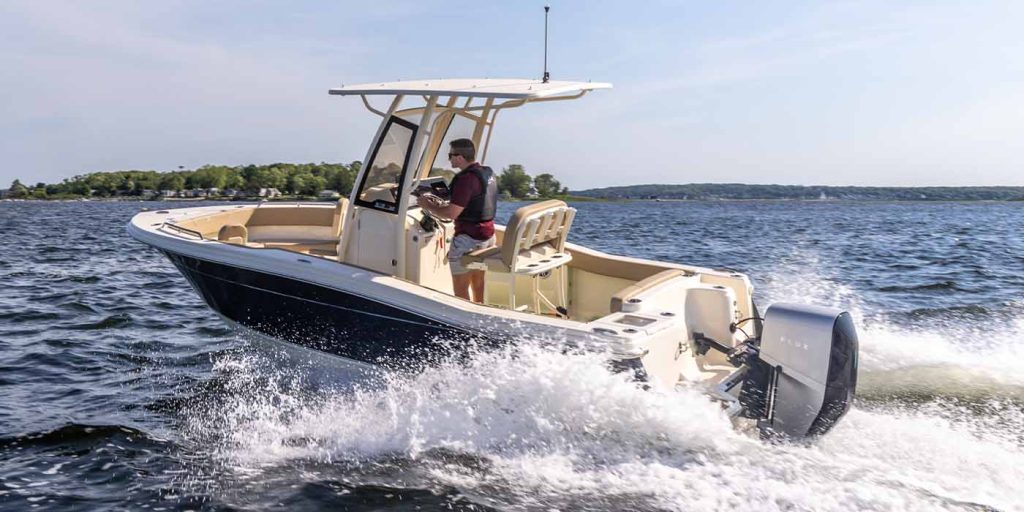



IMAGES
VIDEO
COMMENTS
With the Spirit 1.0 Evo electric sailboat motor, you can go 5.5 mph (8.8 kph) at top speed on the 21 ft RS21 sailing boat, or troll for 20 hours continuously at 2.2 mph (3.5 kph) according to our test. This electric sailboat motor with regeneration allows you to recover energy from the prop while under sail.
Sailing with an Electric Motor In 2021 we installed the QuietTorque™ 10.0 Electric Motor by Electric Yacht on our 1972 Cheoy Lee Clipper Sailboat, which we use for day charters from May through October on Lake Superior.
Sailboat Kits & Accessories. Supporting Electric Marine Conversions Since 2007. When we're not at the race track you may find us out on the water! Convert your sailboat to a clean, quiet electric drive! Eliminate noxious diesel fumes and the cost of filling up at the pump. Enjoy your sailboat to the fullest, with a quiet drive and truly fresh air.
Oceanvolt offers Hybrid or Electric systems as a power & propulsion option in partnership with many leading monohull boat builders - adding new partners continuously. We also offer repowering solutions for converting away from legacy diesel engines - removing the diesel engine, fuel tanks and exhaust system - cleaning up greasy, smelly engine ...
Consider installation of your motor and your battery charging options. While many boat owners can manage this conversion themselves, professional installation can ensure it's done right. As for charging, you have multiple options. Make sure you have a compatible battery charger, which may connect to shore power stations or solar panels.
The typical electric propulsion system for a 10m, 6-tonne cruising yacht will usually be designed to provide around five to six hours of gentle cruising in fairly neutral currents at around 4 knots, or maybe 10 hours of motor-sailing, before requiring a charge. Unlike a car, however, a boat can have solar panels on its deck, coachroof and arch ...
The QuietTorque™ 10.0 Sport is a cost effective 10kW electric propulsion system designed for the day sailing and coastal cruising sailboats up to 35' (LOA) and 12,000 lbs displacement. Typically programmed and sized to push boat at cruising or harbor speed. Motors normally ship within 5 business days.
At Powerflow Marine we know how much time it takes to maintain a boat. That's why we've developed propulsion systems that are reliable and efficient alternatives to diesel or gas engines. We can assist during your conversion planning with video consultations and wiring diagram creation. We have the ability to add on Victron Energy equipment ...
Eliminate noxious diesel fumes, the cost of filling up at the pump, and enjoy your sailboat to the fullest with this DIY electric conversion Kit.The 5KW Brushless Kit featuring a Motenergy brushless motor and a 48V Sevcon Controller that can produce up to 5KW continuous and is often used to replace 10-15hp combustion engines.
The cost of going electric is comparable to that of fitting an ICE (internal combustion engine). The total cost was less than Au$8 000. This included the sailboat kit consisting of a: 10kW engine, electronics for the motor, gear reducer, display unit, speed control, 9.5kWH of usable battery storage. 6 *160W solar panels.
The 10KW Brushless Kit features a Motenergy brushless motor and a 48V 450 Amp Sevcon Gen4 Controller that can produce up to 10KW continuous, often used to replace 30hp combustion engines! This system is best for boats up to 12,000 pounds displacement. All our systems have reverse on-the-fly and contactor disable features.
Having an electric engine also totally changes the way one sails, tacking up wind with just 2-300W gives an extra couple of knots and an additional 10° of pointing angle (as the apparent wind shifts), and all this silently. Wow! Electric sailboat conversion: What we learned
Electric motors achieve instant torque with Electromotive Force while internal combustion engines need to build RPMs gradually by increasing piston firing frequency. Hydro Generation At sailing speeds over 6 knots Oceanvolt systems are able to generate significant power for recharging the battery bank by activating at the touch of a button.
Option 2 - Convert to Electric with an all-electric and solar solution, which means no more exhaust fumes aboard sailboat ever again. Beginning with system design, we can offer solutions to your needs. We can remove your old engine and begin afresh. Or we have the ability to insert hybrid generation and hybrid drive to your existing drivetrain.
Electric inboard boat motors from Elco Motor Yachts are suitable for new boats, or as an upgrade to existing vessels. Our electric inboard boat motor conversion kits can turn a noisy gas-powered boat into a serene pleasure boat for quiet enjoyment of nature's beauty. Our electric inboard boat motors, ranging from 6HP to a robust 200HP, are a ...
The point at which an electric vehicle's lifetime emissions break even with a combustion engine car also depends on the car's mileage. For example, in Germany - where about 40% of the energy mix is produced by coal and 30% by renewables - a mid-sized electric car must be driven for 125,000 km , on average, to break even with a diesel car ...
10 Electric Yacht Systems. QT2.5DD 24v direct drive $4995; QT3.6DD 36v direct drive $4995; ... Check out our boat conversion list - Find you boat! Want to talk to a client, They love to talk about their conversions. Conversions. ... Current Engine Type and Power*
In this video, the electric motor on my sailing boat is finally reinstalled, inspired by YouTubers such as Sailing Uma! Nick helps me connect up the new cont...
Eliminate noxious diesel fumes and the cost of filling up at the pump and enjoy your sailboat to the fullest with this DIY electric conversion Kit. The 18kW kit features a liquid cooled Motenergy motor, paired with a Sevcon Gen4 controller to produce a whopping 18kW continuous at 72v! Customers have used this system in boats up to 25K pound ...
Sailing with an Electric Motor In 2021 we installed the QuietTorque™ 10.0 Electric Motor by Electric Yacht on our 1972 Cheoy Lee Clipper Sailboat, which we use for day charters from May through October on Lake Superior. We have been extremely satisfied with the...
Oct 23, 2018. #13. The couples in the video, claimed they converted because they "wanted to" not as a replacement for a diesel engine. Two of the couples bought boats with non working diesels. The third was given a boat and removed the diesel to replace it because of smell and the idea of being "fossil fuel free".
D&D Motor Systems is the premier electric boat motor manufacturer in the U.S. for electric boat conversions.Our outboard electric motors offer higher performance than the other motors that are out there. Our electric boat motor have: higher torque, better thermal capabilities and a competitive price. In addition, we offer a complete line of U.S. made electric boat controllers to go with our ...
Catalina 30 San Diego. Sep 1, 2012. #1. Hi all, it has been about 4 months since I converted my Catalina's Atomic Bomb to Electric propulsion. The ingredients were, 9hp AC brush less motor, Charger, 4 AGM Batteries, Throttle, and a computer control/display and of course various cables etc. Although its too soon to know in the long run whether a ...
The result is a 100% electric day boat with room for nine passengers designed for cruising and coastal fishing at sea. The Scout 215 XSF offers a top power output of 150 hp (112 kW) and 100 hp (72 ...